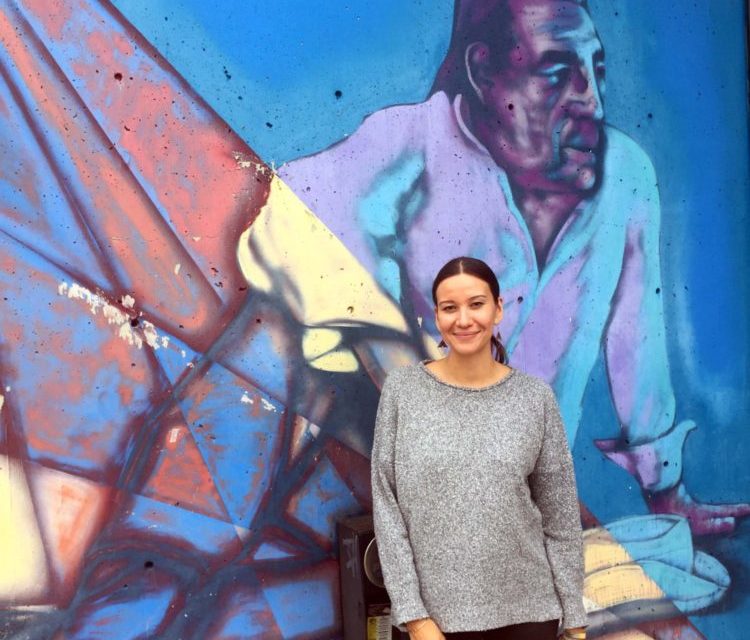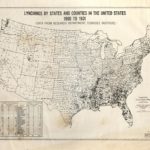By Caroline Preston
This article previously posted at The Hechinger Report February 6, 2020.
Native students have the lowest college graduation rates in the nation, but American Indian and Alaska Native students at the University of Minnesota-Twin Cities have made impressive gains
MINNEAPOLIS — Charles Golding looked for two things when he was researching colleges: a top economics program and a connection to his native culture. A Google search led him to the University of Minnesota-Twin Cities, a state flagship school with prize-winning economists and a history of indigenous activism.

The university’s Department of American Indian Studies, founded in 1969, is the oldest such program in the country, and it’s located in the city where the American Indian Movement began in the late 1960s.
But Golding’s arrival on campus was discouraging. His father is a member of Arizona’s Quechan tribe and his mother is from Mexico. He chose a particular dormitory floor because of its designation as a “living learning community” for indigenous students. But he said he was one of just two people who identified as American Indian. Most of his hall mates were white.
At times, he felt pressed to speak for all indigenous people or to answer insensitive questions from other students. He did well academically, but still contemplated transferring to a state university back in Arizona.
“It was a major culture shock,” said Golding. “Every class, I’d realize I am the only person of color in this classroom. It could get really daunting.”
He stuck it out, and in his second semester began to feel more comfortable thanks in part to a campus center created explicitly to serve native students, the Circle of Indigenous Nations.
Golding is one of a growing share of American Indian and Alaska Native students who are making it through the Twin Cities university, which has seen its six-year graduation rate for these students rise from 27 percent in 2008 to 69 percent in 2018. Meanwhile, the number of undergraduates who identify as native grew to 418 this fall compared with 339 a decade earlier, the university said.
Students and faculty credit this progress in closing the gap for native students to the variety of academic and social supports designed to help them feel welcome on campus. Young people may also be arriving at the university more academically prepared: Since 2005, Twin Cities’ admissions rate has dropped significantly. And these gains notwithstanding, as Golding experienced, the campus has a long way to go.
The improvement at the Minnesota flagship contrasts with a bleaker national picture: Nationally, just 39 percent of native students graduate in six years. And in 2017, barely a fifth of American Indian and Alaska Native adults ages 18 to 24 were enrolled in college, the lowest of any subgroup.
The reasons native students lag behind in college completion are many. They’re more likely than white students to have graduated from low-performing high schools. They have greater financial need. They’re often the first in their families to attend college. The universities they enroll in were in many cases built on land stolen from native people, to serve Western notions of education. And when they arrive on campus today, these students often have to contend with stereotyping and racism.

These challenges are the “ghosts of colonialism,” said Carmen Lopez, executive director of College Horizons, a nonprofit dedicated to improving college success for Native American students. “Our institutions need to be more conscious of this because they’ve been part of the status quo, and they need to be woken up that they are not serving their students the best way,” she said.
Joan Gabel, the new president of the University of Minnesota system, says that American Indians are regularly left out of conversations on inclusion in higher education. That’s in part a consequence of their small numbers: American Indians and Alaska Natives make up less than 1 percent of college enrollment. At Minnesota-Twin Cities, students who identified only as American Indian accounted for less than 1 percent of undergraduates, and those who identified as American Indian or American Indian and another race, 1.3 percent.
The university and others like it have been trying to boost those numbers amid a broader strategy to recruit more students of color as the country’s population diversifies. “If we had a more national perspective on this, the way we do around other types of inclusion, then we would all get better,” said Gabel.

Angela Richards recalls receiving little support from the counselor at her small high school near South Dakota’s Pine Ridge Reservation where she grew up. Of the four native students in her graduating class, she says she was the only one to go straight to college. But even though her parents had pushed her in that direction — they used to tell her that there was nothing more powerful than an educated native woman — Richards felt consumed by guilt about her decision to leave the reservation and her family.
In tears, she boarded a Greyhound bus in 2010 and rode it nearly 500 miles to begin her college career at Concordia University, in St. Paul.
“In my culture, you don’t leave your family,” said Richards, now 28. “You always stay somewhere close by.”
Once she got to college, balancing her reservation and campus identities proved difficult. “You’ve got your moccasin on, and you’ve got your office footwear on,” she said.
Richards struggled at times, transferring first to the University of Minnesota-Morris and later to Minnesota-Twin Cities before dropping out after her mother was diagnosed with breast cancer. She returned in 2017 and graduated the next year, having found a sense of community within the American Indian Studies department and with clubs for indigenous students. But still, she said, she missed countless ceremonies and funerals back home. She only persisted thanks to multiple calls to her mother a day.
University officials are often ignorant of the particular needs and obligations of American Indian students, said Tadd Johnson, who directs a master’s program in tribal administration and governance at the University of Minnesota-Duluth.
These young people may have spiritual and cultural commitments that regularly draw them away from campus. And often, nonnative counselors and advisors are ill-equipped to understand the concerns and multigenerational trauma that some native young people experience, students and faculty said.
Funerals are one example: Death rates are high on reservations and typically the whole community attends. “People don’t understand what funerals mean in the Indian world and can’t believe people are dying that much,” said Johnson, who noted that he sometimes helps native students communicate their needs to nonnative professors. “A little more understanding always helps.”
Similarly, the financial aid process can expose tension between native students and higher education. Asking native students to enter into loan agreements with the federal government can be fraught given the U.S. government’s record of breaking its contracts with American Indians, said Megan Red Shirt-Shaw, a graduate student in education at the University of Minnesota-Twin Cities.

Vanessa Goodthunder, who holds a bachelor’s and a master’s degree from the University of Minnesota-Twin Cities, balanced the demands of college and her connection to her community and culture by returning often to the Lower Sioux Indian Community where she grew up. As an undergraduate, she taught a Dakota language class several times a month on the southwest Minnesota reservation. Like many native students, her goal was always to return to help her community, and after working for the governor’s office, advising on diversity and inclusion, she now runs federal Early Head Start and Head Start programs for young children on the Lower Sioux reservation.
Maintaining the connection to her community, even though it took time away from her studies, also helped her cope with an experience that Lopez of College Horizons said is common for indigenous students: feeling simultaneously invisible and hypervisible.
Professors often singled out Goodthunder to provide the native person’s perspective on a topic. “It was just exhausting,” said Goodthunder, now 25. “It’s hard to discuss again and again, because we always have to start back at precolonization and what historical trauma is.” Goodthunder recognized the value for other students in hearing from her, but she said she simply couldn’t always fill that role.
That’s why organizations and programs for native students are so important, providing a place where these young people don’t have to explain themselves, students and university staff say.
Reducing that isolation also means bolstering the number of indigenous students on campus. The Twin Cities university has been trying to increase its outreach to tribal communities. It recently opened a summer institute for indigenous high school students. And one recent Friday, hundreds of native high schoolers from the Twin Cities and beyond gathered at a student center on the university’s St. Paul campus for a college fair designed explicitly for them.

On campus the same week, the American Indian Studies department hosted a Mohawk artist from Canada who screened several short films, including a sci-fi retelling of an Iroquois creation story. The following day, the American Indian Student Cultural Center, a brightly decorated room in a gleaming building that is home to similar centers for African American, Asian American and other student groups, held its weekly Frybread Friday event.
In another campus hall, Jacob Bernier and Chrissy Pettit, two recent graduates who now attend a master’s program in heritage studies and public history, were planning an exhibition on indigenous canoes and environmental justice. A club they helped to start, Canoe Rising, meets regularly on the Mississippi River for canoe excursions, paddle-making workshops and lectures.
These activities for indigenous students notwithstanding, students and staff said there is much more to be done. Hiring more indigenous faculty and staff is one step. At the University of Minnesota-Twin Cities and nationally, the share of faculty who identify as American Indian or Alaska Native is less than 1 percent. While it’s a good thing that the university has a center designed for indigenous students (an official with the Twin Cities graduate school’s diversity office has identified just 141 in the U.S. and Canada that do), the Circle of Indigenous Nations employs just one person.
The University of Minnesota-Morris, for instance, has gone further. It waives tuition for American Indian students because of its history as a boarding school for Indian youth who were taken from their families in the early 1900s in the name of assimilation. (Its average six-year graduation rate for American Indian and Alaska Native students between 2014 and 2017 was 45 percent, above the national average.)
Many people would like to see other public universities in the state waive tuition. The University of Minnesota-Twin Cities, for example, was built on Dakota land after the Land-Grant College Act, or Morrill Act, of 1862 provided territory to states to finance the creation of universities.
A few hours before the Frybread event, Golding, the University of Minnesota junior, was typing on his laptop in the American Indian Student Cultural Center.
Golding said he favored tuition waivers and more forthright conversations about the university’s past. “It’s a very odd thing to be treated like a foreigner in your own country,” he said.
Now more than halfway through college, Golding said he’s grown a lot since freshman year. He spends more time at the student-run cultural center for American Indians, and has learned a lot from classes in the American Indian studies department, which has helped lend historical context to some of his inklings about politics, race and identity.
When he graduates, he’s thinking of using his economic knowledge to help tribes find alternative sources of income beyond tourism and resource extraction. “It’s important to me that I am not just critical of the systems that are in place,” Golding explained. He wants to also have the ability to “theorize solutions.”
###
Caroline Preston is a senior editor at The Hechinger Report. She holds a B.A. in history from Brown University and an M.S. from Columbia University’s Graduate School of Journalism.
The Hechinger Report provides in-depth, fact-based, unbiased reporting on education that is free to all readers. For more information on this and other aarticles, visit https://hechingerreport.org/how-one-minnesota-university-more-than-doubled-its-native-student-graduation-rate/












